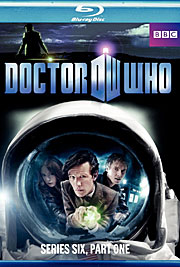Series Six, Part One
- Sci-Fi
- 2011
- Buy the Blu-ray
All photos © BBC
Reviewed by Ross Ruediger
()
ince they only represent the first half of a season, it’s difficult to give any kind of fair review to this block of seven episodes. They begin strong, with loads of promise, but then slowly peter away into utter mediocrity. At the end of the semi-revelatory seventh episode, it’s still only mid-season, so it’s entirely probable the series will redeem itself later this year in the final six installments. It needs to, because if it doesn’t, Season Six could go down as the weakest since the series re-started in 2005.
But who would’ve thought such thoughts upon broadcast, given the way this block starts out? The opening United States-set and partially lensed two-parter – comprised of “The Impossible Astronaut” and “Day of the Moon” – is gloriously near-perfect; a tale of Richard Nixon, Neil Armstrong’s left foot, and the most unsettling aliens the series has unveiled since the Weeping Angels. The Silence were seeded throughout Season Five, and hence had a lot to live up to, and while there’s no question they’re creepy looking, what really sells them is the premise: beings that edit themselves from your memory the moment you stop looking at them. With the Angels you at least knew they were there, so there was something to fight against. The Silence make the battle considerably trickier and disturbing. The goings-on are helmed by the great Toby Haynes (“The Big Bang,” “A Christmas Carol”), who once again proves that he’s the ideal director for bringing Steven Moffat’s words to life. Even if there’s a bit of rubbish in the script, Haynes is able to convincingly gloss over it so viewers barely notice. Further, these two episodes set up the season with a handful of different mysterious complexities that promise greatness to come. But will it?
After such a riveting, almost movie-like opening experience, “The Curse of the Black Spot” on first viewing feels like a massive letdown. On a second, more forgiving viewing, however, it reveals itself to be a rather delightful romp. Set onboard a pirate ship, and guest starring Hugh Bonneville and Lily Cole, this tale of alien tech influencing terrestrial myth is pretty much nuts and bolts, paint by numbers “Doctor Who.” What sells it, though, is a fine group of guest actors (particularly Bonneville’s pirate captain), wonderful set design, and once again, some sterling direction, this time from Jeremy Webb, who will also be helming the season finale later this year.
Following on is perhaps the most anticipated episode of “Doctor Who” in several years, and that’s “The Doctor’s Wife,” written by that most squee of fanboy-and-girl squees, Neil Gaiman. When a guy like Gaiman steps up to the plate to write an episode of a show like this, people take note. People may, in fact, take many notes. I took some, and came to the conclusion that his story, which undoubtedly has its heart in the right place, is ultimately too complex and layered an idea to properly get across onscreen in 45 minutes. Were this a book or even a graphic novel, it would likely work swimmingly, but as a TV episode it just doesn’t feel as if it ever goes as far as it should with the premise – a premise which would be heretical to spoil in a DVD review. Additionally, there were some counter-productive production decisions made here including the bland presence of an Ood and the bumbled distortion of the voice talents of actor Michael Sheen to the point where it no longer even sounds like him. By no means is this bad “Doctor Who,” but it’s a ways off from the classic that was hoped for.
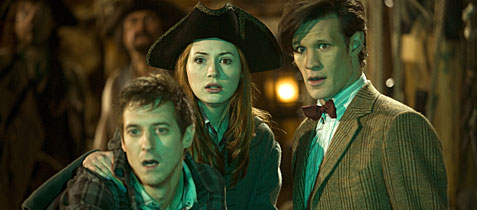
Next up is another two-parter (“The Rebel Flesh” and “The Almost People”), only this tale isn’t nearly as successful as the pair the opened the season. A story about doppelgangers (here referred to as “Gangers”), it’s essentially a meditation on what constitutes humanity. Ridley Scott explored these themes far more successfully in “Blade Runner,” and more recently the ground was once again trod in “Battlestar Galactica.” Both of those concepts fortunately brought far more to the table than this does, as there’s simply not enough here to keep it firing for 90 minutes. Part of this may have to do with Matthew Graham’s (“Life on Mars” and “Fear Her” from the second season of new “Who”) script, but the bigger culprit may be Julian Simpson’s direction, which is fairly stodgy, and he never seems able to get his supporting cast to rise to the occasion. It eventually becomes nigh impossible to distinguish Ganger from template human, and as such the viewer loses interest in the goings-on. The story purports to be a pivotal adventure for a couple of the ongoing seasonal mysteries, but what goes down here could or should have been accomplished in one episode.
And finally we come to the mid-season finale, “A Good Man Goes to War,” which is a letdown on more levels than it is successful on others. Often cliché-ridden and bombastic, frequently juvenile and tedious, this could very well be Steven Moffat’s weakest hour of “Who” ever. It’s supposed to be chock full of exciting action, which it isn’t, and daring revelations, such as the big one at the finish, which feels akin to what “General Hospital” might be like were it written by H.G. Wells. Again, I go back to the director, who here is someone named Peter Hoar. The guy just seems to get lost in Moffat’s myriad ideas, playing each note as broadly as possible. This is exactly the sort of thing that separates the men from the boys. I firmly believe that Toby Haynes could’ve made something thrilling out of this material, but instead the task was handed to a man who’d never worked on the show before. I understand the need to bring in fresh talent, but did such a gamble have to be taken on what’s, for the time being anyway, a Very Important Episode?
Obviously, I’ve talked about direction a great deal here – more so than I’ve probably ever talked about direction before on “Doctor Who.” But that’s because direction is more important to the show than ever before. Moffat has in many ways traded in character for concept. His vision of “Who” is, in fact, more high-concept than anything Russell T. Davies ever unveiled. The Davies years were marked by great characters and great actors inhabiting them, so directors could always fall back on their on-screen talent. We’ve been dealing with Amy Pond for a year and a half now, and I still feel as if don’t know anything about her. She’s a prop used to propel the plot and little more. This is no dig at Karen Gillan, who does the very best with what she has to work with, but facts are facts: Rory (Arthur Darvill) is far more engaging than his wife. Anyway, the point being that if the directors don’t have deep, layered characters to fall back on, they must keep us engaged through the deep, layered plots Moffat has constructed, and when they fail to do so, the entire thing comes crashing down, house of cards style, and that’s what happens in the later episodes in this block.
None of this is to say that all hope is lost. “Who” seasons have been much further gone than this one and still recovered admirably (Season Three, anyone?), so there’s plenty of room to bounce back. What’s most important for the second half of the season is that it must pay off the complicated threads that were set up in the first two episodes, almost none of which were addressed in “A Good Man Goes to War.” And while they’re at it, it would also be nice to know who exploded the TARDIS in Season Five…or is that asking too much?
P.S. Matt Smith is the glue holding it all together. The guy remains a marvel, and one never tires of watching him inhabit this strange creature from Gallifrey.
Special Features: This set offers up only two 10-minute Monster Files, one on the Silence and one on the Gangers, so it’s obviously fairly barebones. If you want the big mack-daddy season set with all the bells and whistles, you’ll have to wait until later in the year, presumably. But for the time being, this is a gorgeous high-def presentation of both sound and visuals. It is frequently so lush and engrossing that it becomes easy to overlook some of the problems within the episodes. Nobody can accuse the designers and sound mixers of not doing their job, that’s for damn sure.
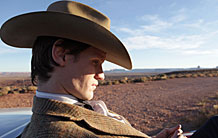 |
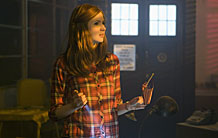 |
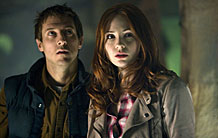 |
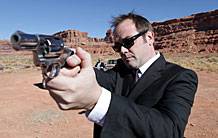 |
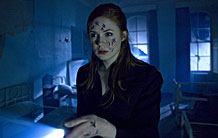 |
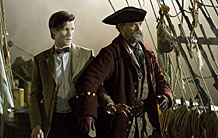 |
You can follow us on Twitter and Facebook for content updates. Also, sign up for our email list for weekly updates and check us out on Google+ as well.













